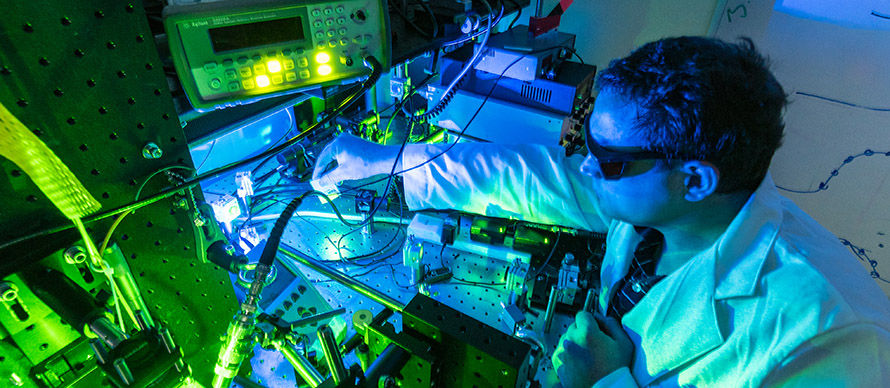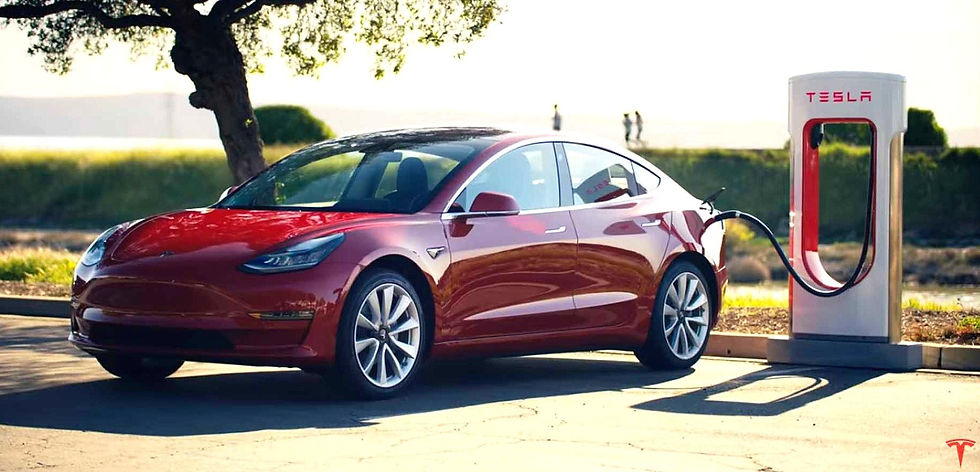Essence and Applications of Nanotechnology
- Güney Baver Gürbüz
- 10 Kas 2021
- 6 dakikada okunur
Nanotechnology is science, engineering, and technology conducted at the nanoscale. In the International System of Units, the prefix "nano" means one-billionth or 10^-9; therefore one nanometer is one-billionth of a meter. It includes an understanding of all fundamental science branches and technology. Basically, its utmost aim is to promote the utilization of materials and devices with extremely small dimensions. However, the variety of its applications is very broad in our daily life, and potential enhancements can be used to improve the quality of our lives in wide aspects. Today’s engineers are working on finding a wide variety of ways to make materials at the nanoscale to benefit from their enhanced properties. Because the current applications of nanotechnology are very complex, the comprehension of them should be understood impeccably to improve the field’s importance and essence.

Applications of nanotechnology include daily usage of materials, computation and electronics, medicine, energy production, and the automotive industry.
Daily Materials:
Many daily used material products based on nanoscale technology are currently on the market. Films made of nanoscale materials for eyeglasses, computers, cell phones, and camera windows are very common as they provide repulsion for water and residue, self-cleaning, scratch-resistant, and resistant to ultraviolet and infrared lights. In addition to these applications, nanotechnology is also used in the textile industry. The qualities conferred to textiles by nanotechnology include water repellence, soil resistance, wrinkle resistance, anti-bacterial, anti-static, and UV protection, flame retardation, self-cleaning fabrics, energy harvesting through movement, and etc. Polymer composite nanoscale materials are used in baseball bats, tennis rackets, bicycles, motorcycle helmets, auto parts, luggage, and power tool enclosures in order to make them lightweight, tough, durable, and flexible. These are some of the major applications of nanotechnology in our daily lives.
Computation and Electronics:
Nanotechnology has hugely contributed to significant advances in computation and electronics, leading to faster, tinier, and more compact systems that can manage and store immense amounts of data and information. Transistors, the primary building block of all microchips, enabling modern computing have gotten smaller and smaller through nanotechnology. At the beginning of the century, a typical transistor was sized between 130 to 250 nanometers. In 2014, Intel designed a 14-nanometer transistor. This was an important enhancement in the sector. 1 year later IBM created the first 7-nanometer transistor in 2015 and showed the potential nanotechnology. Just one year later, the Lawrence Berkeley National Lab demonstrated a one-nanometer transistor. This was really incredible. Smaller, faster, and better transistors could mean that all of your computer's memory can be stored in one tiny chip. MRAM (Magnetic RAM) is a memory technology that uses electron spin to store information. It has the potential to become a universal memory for storage. However, its size is also important for its efficiency. With the latest improvements, MRAM is enabled by nanometer-scale magnetic tunnel connections and can quickly and effectively save data during a system shutdown and enable resume playback features.

Other computing and electronic products include Flash memory chips for smartphones and thumb drive; ultra. In addition to that, sensitive hearing aids; antimicrobial/antibacterial coatings on keyboards and cell phone cases, and flexible screens for ebook readers. Graphene and cellulosic nanomaterials, other applications, are being used for wearable and "tattoo" sensors, photovoltaics that can be sewn to clothing, and various types of flexible electronics to activate coiled electronic paper.
Medicine:
Nanotechnology is already broadening medical knowledge. Nanomedicine, the application of nanotechnology in medicine, utilizes the natural scale of biological phenomena to produce precise solutions for disease prevention, diagnosis, and treatment.
commercial applications have modified gold nanoparticles as probes for the detection of targeted series of nucleic acids. Also, gold nanoparticles are also being clinically investigated as potential treatments for cancer and other diseases. Nanotechnology is also being studied for both the diagnosis and treatment of atherosclerosis, or the buildup of plaque in arteries. Created nanoparticles are used to mimic the body’s “good” cholesterol, known as HDL (high-density lipoprotein), which helps to shrink plaque.

The design and engineering of advanced solid-state nanopore materials are also allowing for the development of novel gene sequencing technologies that enable single-molecule detection at low cost and high speed with minimal sample preparation and instrumentation. Researchers are working on a number of different therapeutics where a nanoparticle can encapsulate or help deliver the drug directly to cancer cells and minimize the risk of damage to healthy tissue. This has the potential to change the way doctors treat cancer and significantly reduce the toxic effects of chemotherapy. Nanotubes can also help to treat cancer. They have been shown to be effective tumor killers in those with kidney or breast cancer. Multi-walled nanotubes are injected into a tumor and treated with a special type of laser that generates near-infrared radiation. In addition to that, researchers are looking at ways that nanotechnology can improve vaccines, including vaccine delivery without the use of needles. Researchers also are working to create a universal vaccine scaffold for the annual flu vaccine that would cover more strains and require fewer resources to develop each year.
Energy production:

The energy applications of nanotechnology compose of using the small size of nanoparticles to store energy more efficiently. This promotes the use of renewable energy through green nanotechnology by generating, storing, and using energy without emitting harmful greenhouse gases such as carbon dioxide.
Solar Cells:
Nanoparticles used in solar cells increase the amount of energy absorbed from sunlight. Solar cells are currently made from layers of silicon that absorb sunlight and turn it into usable electricity. You can check out our article on solar energy here. By using noble metals such as gold plated gold on silicon, the researchers found that they could convert energy into electric current more efficiently. Most of the energy lost during this conversion comes from heat, but when nanoparticles are used less heat is emitted and thus more electricity is generated.
Hydrogen Fuel Cells:
Nanotechnology enables hydrogen energy to be used at a much higher capacity. While hydrogen fuel cells are not an energy source in themselves, they allow energy from sunlight and other renewable sources to be stored in an environmentally friendly manner without CO2 emissions. Some of the main disadvantages of conventional hydrogen fuel cells are that they are expensive and not durable enough for commercial uses, but both durability and price over time increase significantly by using nanoparticles. What's more, conventional fuel cells are too large to be stored in volume, but the researchers discovered that the nano blades can store larger amounts of hydrogen that can then be stored in carbon nanotubes for long-term storage.
Nanographene Batteries:
Nanotechnology is giving rise to nanographene batteries that can store energy more efficiently and weigh less. Lithium-ion batteries have been the elemental battery technology in electronics for the last decade, but the current limits in the technology make it challenging to densify batteries due to the potential dangers of heat and explosion. Graphene batteries being tested in experimental electric cars have promised capacities 4 times greater than current batteries with the cost being 77% lower. Additionally, graphene batteries provide stable life cycles of up to 250,000 cycles, which would allow electric vehicles and long-term products a reliable energy source for decades.
Energy efficiency and energy-saving products are increasing in number and types of applications. In addition to those noted above, nanotechnology is enabling more efficient lighting systems; lighter and stronger vehicle chassis materials for the transportation sector; lower energy consumption in advanced electronics; and light-responsive smart coatings for glass.
Automotive Industry:
Nanotechnology offers the promise of developing multifunctional materials that will contribute to building and maintaining lighter, safer, smarter, and more efficient vehicles, aircraft, spacecraft, and ships. In addition, nanotechnology offers various means to improve the transportation infrastructure:
As discussed above, nano-engineered materials in automotive products include polymer nanocomposites structural parts; high-power rechargeable battery systems; thermoelectric materials for temperature control; lower rolling-resistance tires; high-efficiency/low-cost sensors and electronics; thin-film smart solar panels; and fuel additives and improved catalytic converters for cleaner exhaust and extended range. Nano-engineering of aluminum, steel, asphalt, concrete, and other cementitious materials, and their recycled forms offers great promise in terms of improving the performance, resiliency, and longevity of highway and transportation infrastructure components while reducing their life cycle cost. New systems may incorporate innovative capabilities into traditional infrastructure materials, such as self-repairing structures or the ability to generate or transmit energy.

Nanoscale sensors and devices may provide cost-effective continuous monitoring of the structural integrity and performance of bridges, tunnels, rails, parking structures, and pavements over time. Nanoscale sensors, communications devices, and other innovations enabled by nanoelectronics can also support an enhanced transportation infrastructure that can communicate with vehicle-based systems to help drivers maintain lane position, avoid collisions, adjust travel routes to avoid congestion, and improve drivers’ interfaces to onboard electronics. Significant benefits from the use of a nanotechnology-enabled lightweight and high-strength materials that would apply to virtually any transportation vehicle. For instance, it has been assessed that a 20 percent decrease in the heaviness of a business fly airplane could lessen fuel utilization by up to 15 percent. A primer investigation directed for NASA tracked down that the turn of events and utilization of cutting-edge nanomaterials that are twice just about as solid as customary composites would diminish the gross load of a dispatch vehicle by up to 63 percent. This could not only save a significant amount of energy needed to launch spacecraft into orbit but would also allow the development of single-stage launch vehicles for the path to orbit, further reducing launch costs, increasing mission reliability, and opening the door to alternative propulsion concepts.
-Güney Baver Gürbüz
References:
“Benefits and Applications.” National Nanotechnology Initiative, www.nano.gov/you/nanotechnology-benefits.
materialscience2019. “Nanotechnology in Solar Cells.” 5th International Conference on Advanced Material Research and Nanotechnology, 11 July 2018, advancedmaterials2018.wordpress.com/2018/07/11/nanotechnology-in-solar-cells/.
MichaelBerger–. “Nanotechnology in the Automotive Industry.” Nanowerk, Nanowerk, 12 Nov. 2010, www.nanowerk.com/spotlight/spotid=18972.php.
Research, GlobalData Thematic. “Nanotechnology in Medicine: Technology Trends.” Medical Device Network, www.medicaldevice-network.com/comment/nanotechnology-medicine-technology/.
“What Is Nanotechnology?” National Nanotechnology Initiative, www.nano.gov/nanotech-101/what/definition.



Yorumlar